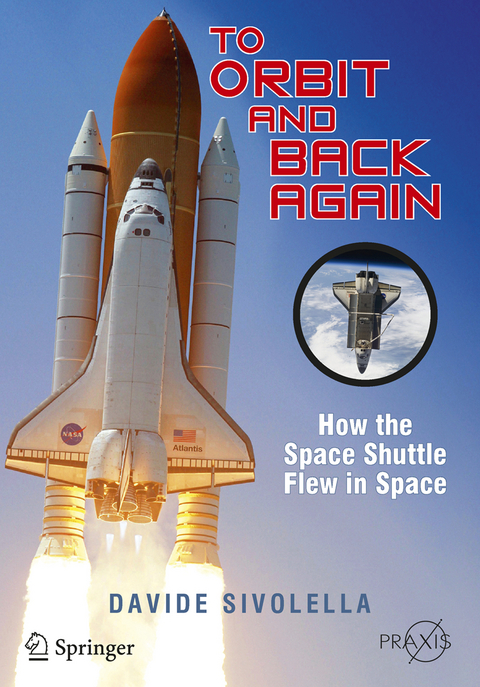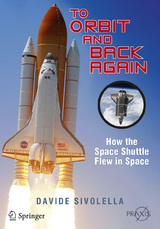To Orbit and Back Again
Springer-Verlag New York Inc.
978-1-4614-0982-3 (ISBN)
The Space Shuttle has been the dominant machine in the U.S. space program for thirty years and has generated a great deal of interest among space enthusiasts and engineers. This book enables readers to understand its technical systems in greater depth than they have been able to do so before.
The author describes the structures and systems of the Space Shuttle, and then follows a typical mission, explaining how the structures and systems were used in the launch, orbital operations and the return to Earth. Details of how anomalous events were dealt with on individual missions are also provided, as are the recollections of those who built and flew the Shuttle. Many photographs and technical drawings illustrate how the Space Shuttle functions, avoiding the use of complicated technical jargon.
The book is divided into two sections: Part 1 describes each subsystem in a technical style, supported by diagrams, technical drawings, and photographs to enable a better understanding of the concepts. Part 2 examines different flight phases, from liftoff to landing. Technical material has been obtained from NASA as well as from other forums and specialists.
Author Davide Sivolella is an aerospace engineer with a life-long interest in space and is ideally qualified to interpret technical manuals for a wider audience. This book provides comprehensive coverage of the topic including the evolution of given subsystems, reviewing the different configurations, and focusing on the solutions implemented.
Davide Sivolella was born in Pinerolo, Italy, in 1981. As a child, he developed a fascination with all kinds of flying machines, especially those which travel above the atmosphere. This passion for astronautics led to bacheklor's and master's degrees in Aerospace Engineering from the Polytechnic of Turin (Italy). He then worked as a specialist in aircraft structural repairs odf civil airliners in the United Kingsom. He thinks of aircraft as spacecraft that fly low and slow. To Orbit and Back Again: How the Space Shuttle Flew in Space is his first book, born from a life-long passion for the Space Shuttle program. Apart from his fondness for human space exploration, and writing about it, he also enjoys cooking, traveling, and landscape photography. He currently lives in England near London with his Spanish wife Monica.
Part 1: The Machine from A to Z.- Introduction.- Structure.- Main Propulsion System.- Solid Rocket Booster.- Orbital Maneuvering System and Reaction Control System.- Cargo Bay and Payload.- Electrical and Environmental Control Life Support.- Thermal Protection System.- Living On Board.- Part 2: Flying the Machine.- Ascent.- Orbital Flight.- Re-entry and Landing.
| Reihe/Serie | Space Exploration | Springer Praxis Books |
|---|---|
| Zusatzinfo | 95 Illustrations, color; 150 Illustrations, black and white; XXII, 502 p. 245 illus., 95 illus. in color. |
| Verlagsort | New York, NY |
| Sprache | englisch |
| Maße | 168 x 240 mm |
| Themenwelt | Sachbuch/Ratgeber ► Natur / Technik ► Weltraum / Astronomie |
| Technik ► Fahrzeugbau / Schiffbau | |
| Technik ► Luft- / Raumfahrttechnik | |
| Schlagworte | Aerodynamic command surfaces • Challenger explosion • How Space Shuttles fly • Main propulsion system • Rocket booster technology • Shuttle engineering • Shuttle orbital flight • Space Shuttle program • Space shuttle structure • Space shuttle systems • Space transportation system |
| ISBN-10 | 1-4614-0982-9 / 1461409829 |
| ISBN-13 | 978-1-4614-0982-3 / 9781461409823 |
| Zustand | Neuware |
| Informationen gemäß Produktsicherheitsverordnung (GPSR) | |
| Haben Sie eine Frage zum Produkt? |
aus dem Bereich




